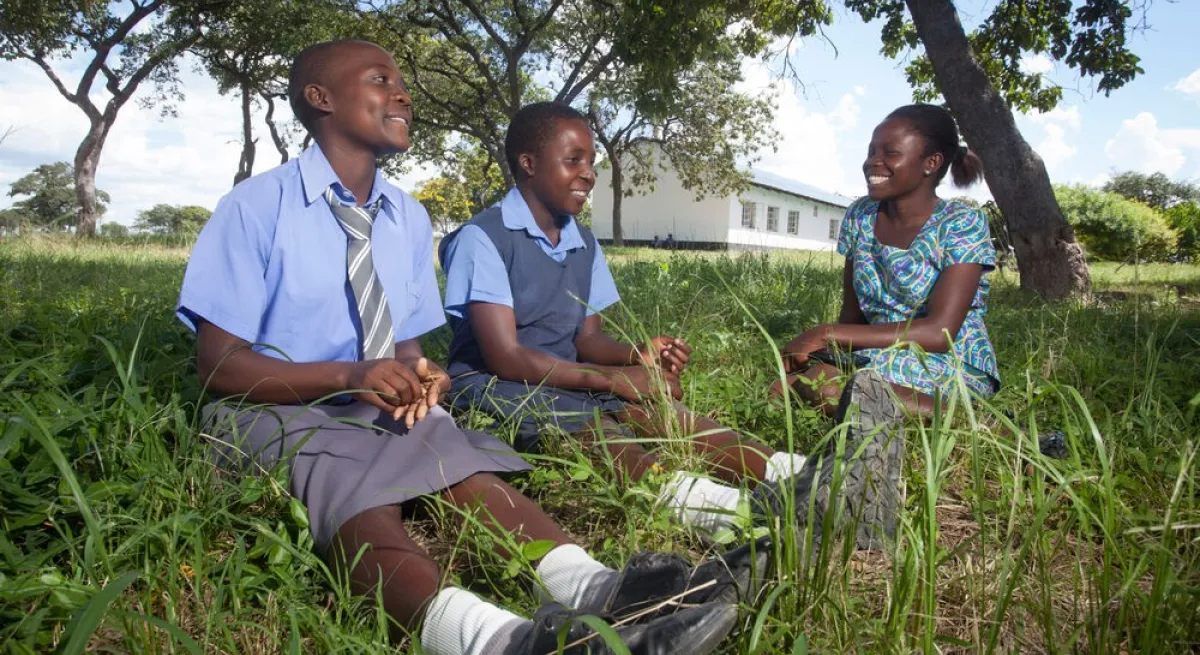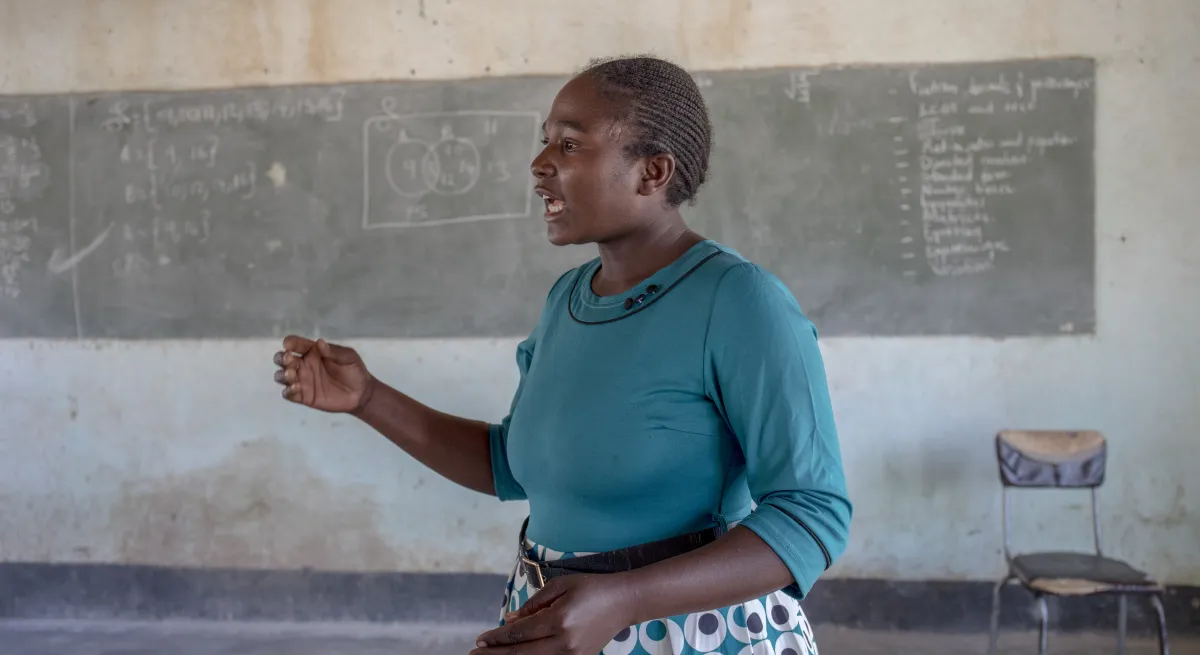Lastingly transforming local education to meet the needs of vulnerable girls and equip them with the skills to break cycles
of poverty and wealth inequality.
-17.824614279052, 31.049124344584
The majority of girls in rural Zimbabwe never complete secondary school. CAMFED’s grassroots female peer support movement is helping to turn the tide.
In partnership with the Julius Baer Foundation, CAMFED is building a robust network of female secondary- school graduates and entrepreneurs who volunteer as mentors for other young women in rural Zimbabwe. Thanks to the multiplier effect of a growing alumnae base, the programme is setting in motion urgently needed cycles of female achievement. Specially trained CAMFED ‘Learner Guides’ reciprocate the support they themselves received, tutoring school-age girls with similar marginalised backgrounds and empowering them to avoid pitfalls like early marriage and pregnancy. A follow-up ‘Transition Programme’ assists participants after they graduate from school, helping them establish independent livelihoods through professional training, career planning, and employment opportunities with successful businesswomen.
Quick facts
- Zimbabwe (42 districts)
- Project support: 2024-2027
- Grant amount: CHF 100,000 per year
- Enabling low-income background girls in rural areas to stay in school and establish strong livelihoods under the guidance of other successful young women.
From isolation and vulnerability ...
In rural areas of Zimbabwe, factors like extreme poverty, child marriage, and lack of formal employment cut short girls’ potential and achievement, leaving them open to exploitation and perpetuation of vicious cycles.
… to networking and strength.
With its tutoring and training programmes, CAMFED connects at-risk girls with local young women who have completed school, begun a career, or founded their own business. Those who have reached their goals turn around and boost the girls behind them.

My experience of nearly dropping out of school influenced my decision and passion to volunteer as a Learner Guide. I wanted to give back and support students the same way my Learner Guide had supported me, so for one year I volunteered every week at my former school, delivering life skills and wellbeing sessions to students.
OUTPUT
CAMFED will provide 6,752 girls with academic and wellbeing support through investing in training 168 Learner Guides in 42 districts in rural Zimbabwe over three years.
OUTCOME
80% of the young women who participate in CAMFED’s Transition Programme will gain a more secure livelihood within 12 months of completing the Programme.
HIGHLIGHT
Each graduate supported by the programme typically helps three more girls complete their secondary education, fuelling a powerful multiplier effect.
Reaching more girls with a proven approach
• In Zimbabwe, girls face significant barriers to accessing and completing education, driving trends of poverty and inequality. The situation is particularly acute in rural areas, where only 18% of girls complete secondary education.
• Child marriage compounds the challenge, affecting 39% of girls by age 18 nationwide – rising to 50% in the poorest communities.
• As a result, young woman are 1.5 times more likely to be out of school, work or training than young men.
• In collaboration with the Julius Baer Foundation, CAMFED is expanding its programmes into some of the most remote and marginalised communities across 42 districts in Zimbabwe.
• Over the next three years, CAMFED is investing in the training of over 160 Learner Guides to reach more than 6,000 vulnerable school-age children in rural Zimbabwe with academic and well-being support.
• It also seeks to provide business and vocational skills training to another 2,460 young women through its Transition Programme.
• Independent evaluations of CAMFED’s approach have shown it boosts girls’ school progression rates by 85% and vastly improves their learning outcomes, for example improving literacy by a factor of two and numeracy by a factor of five.




